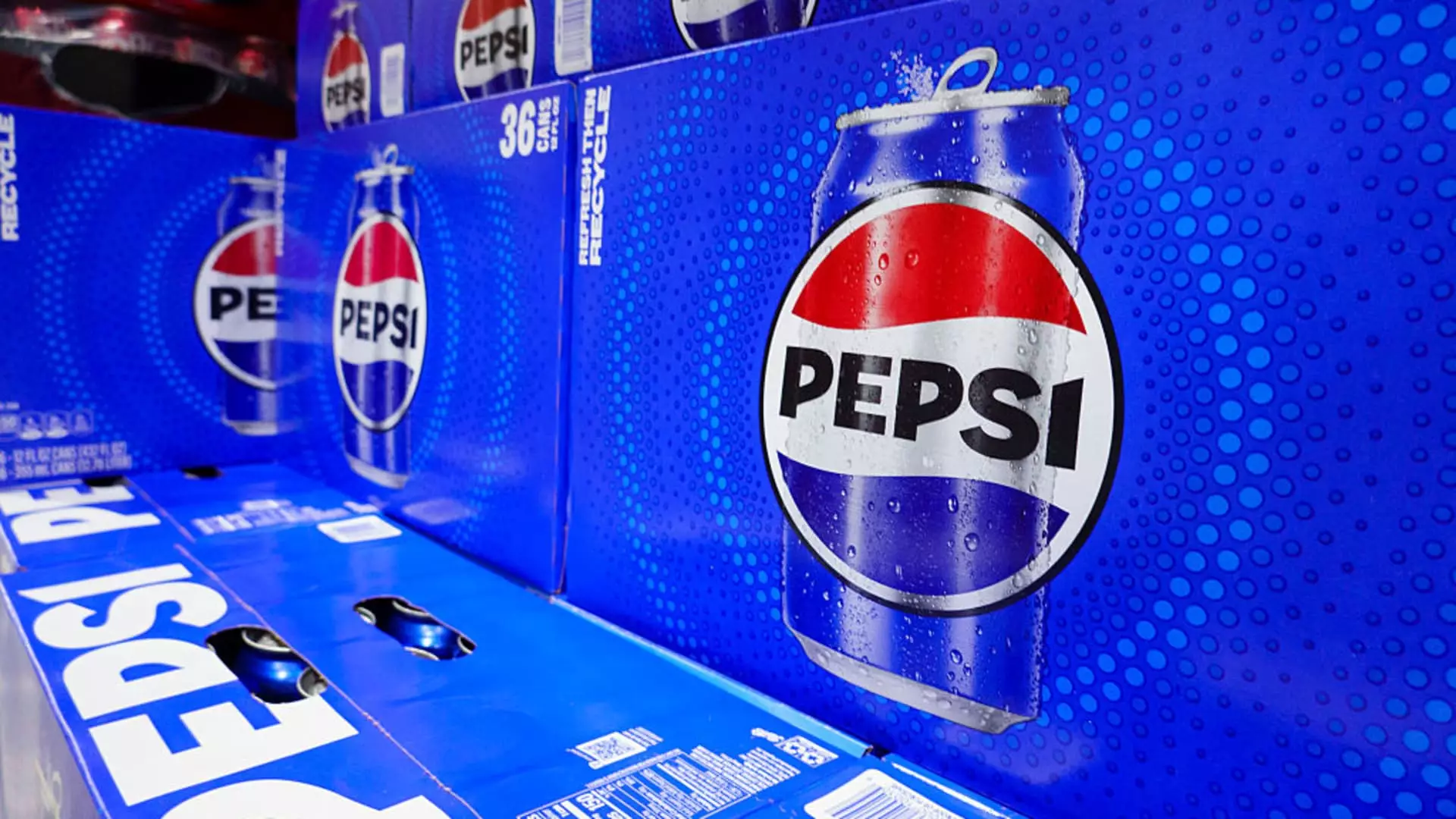PepsiCo’s latest earnings report paints a picture of resilience marred by unmistakable signs of strain. While the company’s slight outperforming of earnings and revenue expectations might seem encouraging at first glance, it’s crucial to dig beneath the surface. The reality is that Pepsi’s North American demand remains fundamentally softening, even as executives trumpet strategies designed to reverse the trend. The company’s projected return to growth after a period of stagnation hinges on changes that are still taking shape, and there’s a palpable question mark looming over these initiatives: are they enough to restore confidence? It’s easy to celebrate a few percentage gains in sales or share prices, but the underlying data suggests a company grappling with a shift in consumer preferences, economic headwinds, and internal restructuring fatigue.
The decline in volume, notably within North American markets, underscores a critical challenge. A 2% drop in beverage volume and a 1% decline in the food division reveal that consumers are not only purchasing less but perhaps increasingly skeptical of traditional snack and soda offerings. This isn’t a temporary dip but a reflection of changing attitudes towards health, lifestyle, and economic prudence. Pepsi’s attempt to rebrand its core products with minor relaunches, such as focusing on potatoes and corn in Lay’s and Tostitos, hints at strategic desperation rather than confident innovation. Meanwhile, their focus on healthier snacks and multicultural offerings, although promising, may be insufficient to counter the broader decline in consumptive enthusiasm for processed foods and sugary drinks.
The Illusion of Strategic Flimsiness
What’s conspicuously lacking in Pepsi’s approach is a convincing narrative for sustained transformation. The company’s plan to lean into healthier snacking trends is spot-on politically and socially; however, it risks being perceived as reactionary rather than pioneering. Cost-cutting measures, such as closing manufacturing plants and optimizing logistics, are vital in the short term but do little to excite consumers who want authenticity and innovation. The repositioning of brands like Lay’s and Tostitos is more about placating shareholders than about meaningful market shifts.
More concerning is the company’s perseverance with an optimistic outlook that seems disconnected from the current realities. The insistence on a low single-digit organic revenue growth for the year appears overly optimistic, especially given the persistent softness in North American volumes. Moreover, the company’s reliance on price increases—a tactic that could backfire if consumers continue to tighten their belts—adds a dangerous layer of risk. In the long run, Pepsi’s reliance on strategic pivots and short-term cost cuts might only serve to mask deeper structural problems that demand genuine innovation and consumer engagement, not just corporate restructuring.
My Critical Viewpoint: Resisting the Temptation to Spin
From my center-right liberal perspective, I believe Pepsi’s current trajectory is a cautionary tale of corporate overextension and misplaced optimism. While it’s commendable that the company is cutting expenses and trying to optimize its operations, these steps address symptoms rather than root causes. The disconnect between executive optimism and market reality suggests a leadership that is still clinging to legacy brands and outdated business models.
The pivot toward healthier and multicultural offerings is a step in the right direction, but it shouldn’t be an admission of failure; rather, it should be an incentive for genuine innovation, not superficial tweaks. Pepsi must recognize that modern consumers are increasingly skeptical of corporations that merely repackage old products under new labels. To truly turn the tide, Pepsi has to embrace a more daring approach—invest in cutting-edge health-conscious brands, leverage technology-driven personalized marketing, and forge strategic alliances with emerging food tech startups. Without these bold moves, the company’s reliance on cost-cutting and incremental product changes risks becoming a cocktail of complacency and missed opportunities.
Finally, the belief that weakened demand in North America will bounce back purely through internal adjustments might be overly optimistic. The broader economic environment, rising inflation, and a cultural shift away from sugar-laden drinks and processed snacks are formidable hurdles. If Pepsi’s leadership continues to rely on internal restructuring without addressing core product relevance and consumer trust, then it risks a slow decline masked by superficial numbers.
While the stock’s recent 6% jump might seem like a sign of confidence, it could easily be short-lived if the company’s strategic adjustments do not translate into actual consumer appeal. Pepsi needs a dose of realism more than reassurance—recognizing that the current market demands not just efficiencies but genuine adaptation to a rapidly changing cultural and economic landscape. Only then can it ensure that it does not become just another giant stumbling over its own complacency.


Leave a Reply